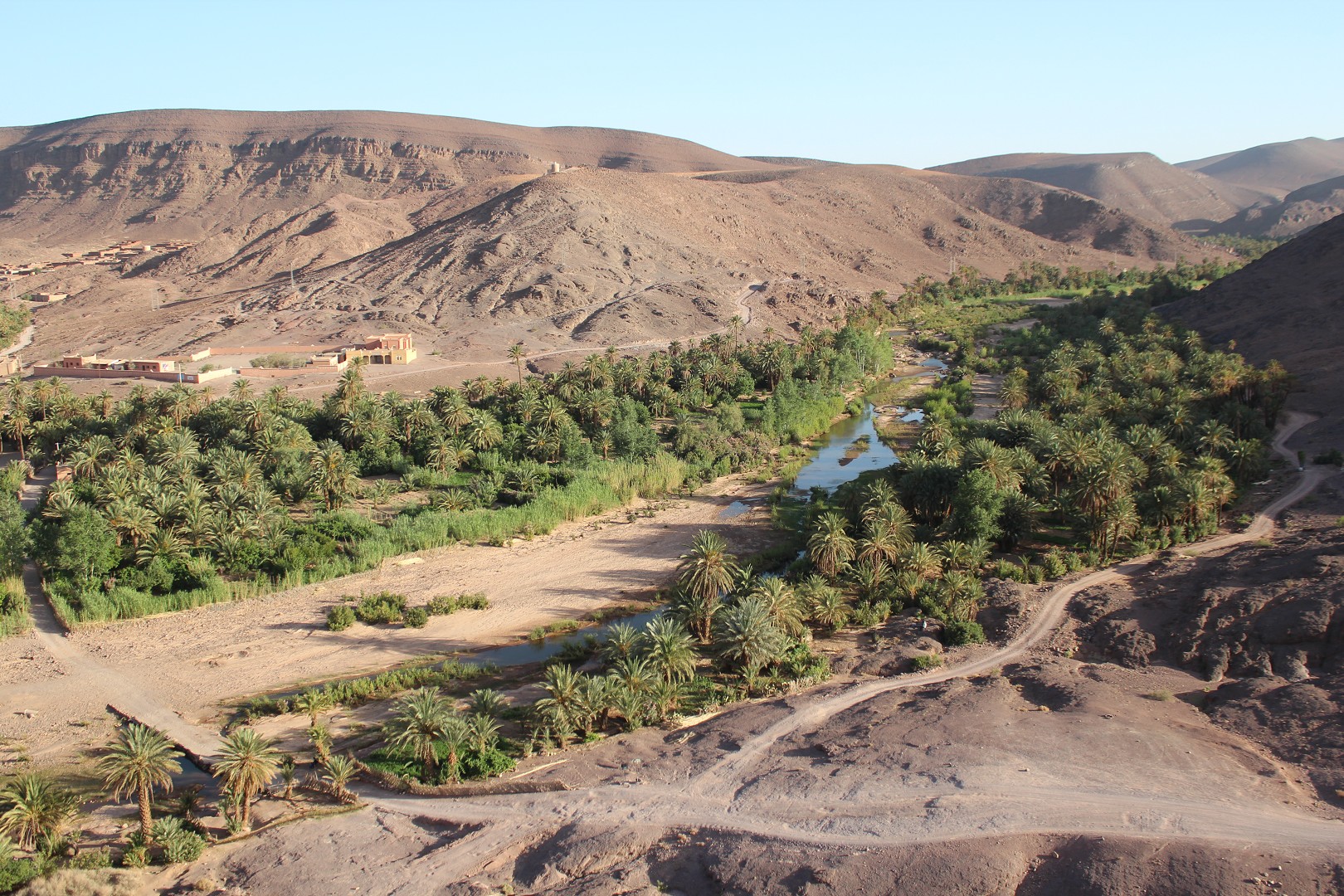
Mostly dominated by palm groves, the traditional oases of North Africa and Middle East are characterized by significant assets, including early production and a very high plant and animal biodiversity. In addition to the exceptional diversity of the date palm, the associated crops such as tree species, cereals, vegetables, fodder and medicinal also contain a significant biological wealth. Similarly, the oases are the cradle of various animal species.
Despite these undeniable assets, the majority of oases around the world are facing severe constraints. Indeed, the balance of the oasis ecosystem faces the combination of many destabilizing factors and elements: natural resources overexploitation , recurrent droughts, urbanization in strong expansion on cultivated land, amplified impacts of climate change, genetic erosion of animals and plants, silting and soil salinity leading to desertification. Although the date palm is adapted to the climatic conditions of oases, it faces a multitude of challenges and threats and weakened by recurrent droughts (cryptogamic diseases, pests, soil salinization …). The oases are thus subject to a real threat that would lead to a disruption of this balance, and have baneful consequences on their continuity and sustainability and a risk of seeing them disappear in the face of a scarcity of water resources and desertification in full expansion.
Undeniable efforts of scientific and technical research still deserve to be pursued and strengthened in order to reach protection devices and the most adequate solutions to overcome such constraints.
Faced with these constraints, amplified by the effects of climate change, it is necessary to address the complexity of the problem of development in the oases with an approach of openness and exchange of experiences between all parties concerned with the oasis areas of various countries. It is certain that efforts have been made here and there and research programs have led to various important results. But this complexity requires a thorough, multi-institutional and multi-sectoral reflection in order to propose integrated and sustainable management options for these areas.
Aware of the strategic role of oases in the world’s drylands, the Moroccan Ministry of Agriculture, Maritime Fishing, Rural Development and Water and Forests is organizing an “International Congress on Oases and Date Palms” with the following objectives :
- To draw up an assessment of the achievements in terms of knowledge for the development of oasis areas and analyze the main strengths and constraints of the oasis system and support mechanisms for its sustainable development ;
- To exchange on the opportunities and potentialities of integrated agricultural development including the date palm sector and related constraints ;
- To exchange information and experiences between participants in order to promote partnerships and scientific cooperation for the implementation of sustainable technical and economic management models of oasis systems ;
- To promote appropriate mechanisms for knowledge exchange, preservation and sustainability of oasis ecosystems.






